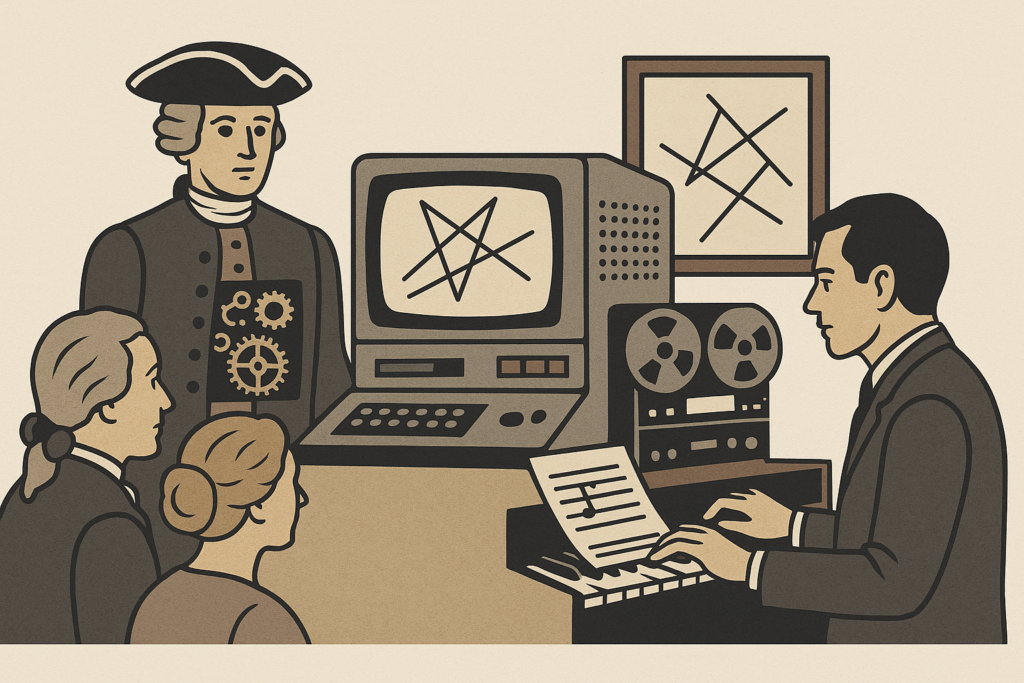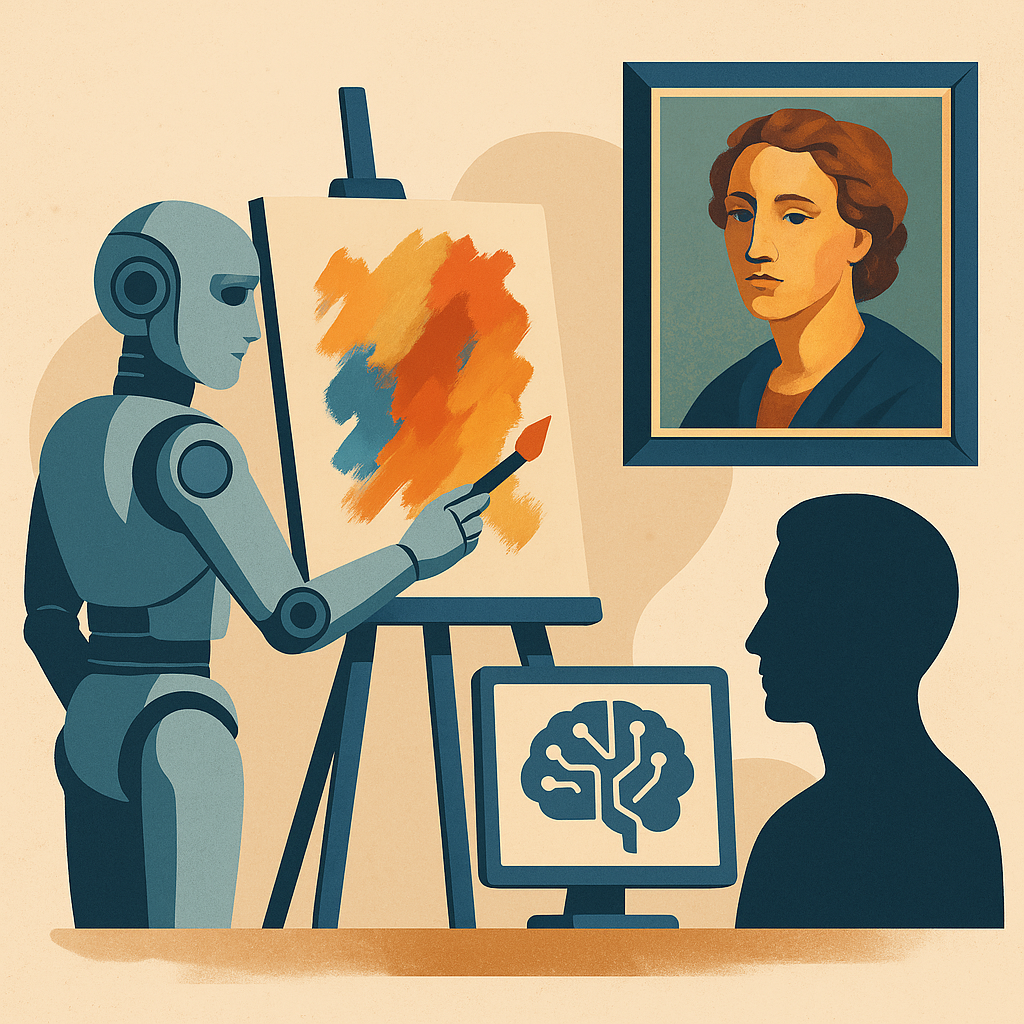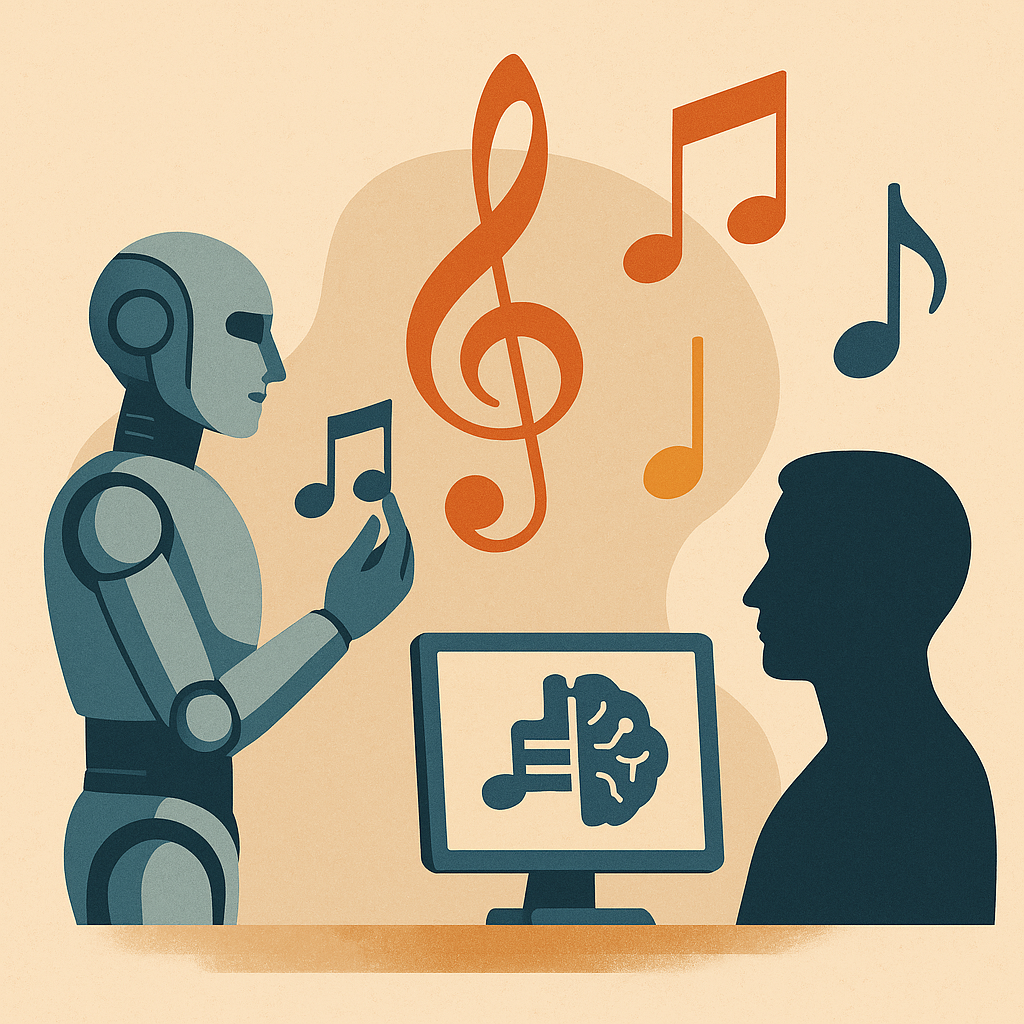Can Al Be Creative? Exploring the Role of Al in Art, Music, and Literature
1-Introduction
The use of neuroaesthetics and neuroscience could mean the beginning of a new way of understanding how charismatic art causes a deep emotional impact. Some media and social networks spread an aesthetic image within reach of the few masterworks, potentially causing a decline in interest in a visit. A mass and poor image viewing mode can be a prelude to the phenomenon of anthropological perception at other times. The consequences of neuroaesthetics and the risk of knowing the secrets of artistic creation can only be hoped for in a magical way for the future of humanity.
In this research on how new technologies are modifying the way creators and the public interact and enjoy the creative product, we have focused on the areas of writing, visual arts, and music. However, the creative field has barely begun. It will be a larger exploration. We explore the blind spot that exists in the literary production process.
We develop a methodology to implement an illusion of the production of a set of poems and stories by programming a neural network. Finally, we have implemented the methodology, developed an illusory inventory, and presented the results. The unsatisfactory products can be considered as a parliamentary process, confinement, or lacking the necessary elements of creativity in capabilities emerging through human emotions.
2. Defining Creativity
Before attempting to answer the question of whether or not AI can be creative, it is necessary to get a clearer sense of what we mean by “creativity.” We will begin this enterprise by examining some terminological and conceptual distinctions to more accurately define creativity and associated concepts.
To start with, it is important to recognize the distinction between two different senses of creativity: big-C Creativity and little-c creativity. Big-C Creativity refers to the capacity of a select few individuals to develop ideas that have a momentous impact on cultural or technical development – individuals such as Bach, Picasso, Shakespeare, or Darwin. By contrast, little-c creativity refers to the much more common and everyday kinds of expression or activity that are considered novel and in some way “valuable.”
These can range from simply doing something in an unusual way to solving a common problem with an innovative approach to crafting a good piece of writing or music. Two related key concepts are originality and value. Originality concerns novelty, the degree to which an idea or expression has not been seen in a particular cultural or personal context before, while value concerns the worth of the idea or expression. However, defining value in the context of creativity is not a straightforward business.
Even for big-C Creativity, there is considerable debate about the criteria by which the worth of a creative act should be determined, and it becomes progressively more difficult as we move down the scale towards cases of little-c creativity. There is, however, one important distinction to note in this respect: there is a difference between thinking a novel idea is good (or valuable) and receiving external confirmation that the idea is indeed valuable. Indeed, it is the latter that is the better criterion for establishing value when it comes to little-c creativity: An idea would not count as a creative one unless it is recognized as such.
3. Historical Context of AI and Creativity

The notion that machines could be artistic was promoted in the late eighteenth century when the concept of the automaton first emerged. At that time, organizations of automata shows used their mechanical machinery to simulate human-like movements, making them a form of construct that was studied by several artists and scientists. It was during the 1950s that the idea of machine-generated art became relevant again with the guidance in the development of information processing machines.
This information art scene started with artists from a group of engineers, mathematicians, systems theorists, and humanistic scholars; its first funders from the staff of a computer corporation as the first productionized arts software were developed for free distribution in the early 1960s. In the late 1950s, industrial electronic music was initiated with the opening of a studio, which followed around the same time developments at a research lab.
Later on, many researchers nurtured the investigation of computer-generated music, including individuals who developed its first software or one of the leading voices of the early computer-generated music promoters. The enthusiasm among scientists was based on the notion that contemporary music was primarily based on a complex practical theory, similar to formal geometrical training that precedes professional interior architects’ commissions.
4. Al in Visual Arts

Art is among the first areas where Al is applied for creative purposes. Many Al systems have been developed to create visual arts, including visual art generation, style transfer, and assisting human artists. Different from traditional digital image processing systems, a genuine Al artist should be trained in a way that is similar to human artists to develop its own artistic styles. Due to the rapid development in computer vision, creativity seems to be well within art generated by AI.
Despite the achievements in computer-generated art, it is not in the forms forecasted by imagination or emotions. Conventional art uses different abstract layers to guide the process, including the development of expression, storytelling or implication, and the realization of art. AI can help the realization of art, but the insight of art can only come from humans. Indeed, the advancement of Al in art can be a major effort to push the boundary, since it can inspire human artists for deep thinking and exploration. Al art devices respect human artists; instead, they should be used to facilitate human imagination and expression of mind, and to reissue ‘creation’ to us.
5. Al in Music

The successful appearance of new Al-generated music styles and compositions is mainly due to progress regarding generative deep learning models and technical constraints, or the fact that music is more categorical than human-like, and AI is more sensitive to statistical outcomes than people. For Al to be trained to create music, it needs to have a wide variety of music styles, predictability, reproducibility, discrete nature, and existing standards for evaluation.
Several high-level tasks are related to Al music composition, such as modeling and score generation, learning and inferring about music style, Al-inspired improvisation, and music translation. In addition, there is a difference between how AI and human-like listening systems infer useful signals from music due to the relatively low robustness of the invariance to transformations in current machine learning. Each of the four elements, including data, models, quality, and art and music, is closely aligned with the nature of music data.
There is a wide variety of music that can be found, and a blacklist is used to exclude music that has a higher chance of infringing a copyright. Music depends considerably on order and predictability. Music is dependent on nature and its discrete form, such as pitch, rhythm, and composition. For music that follows strict forms, such as a sonata or limerick, a discrete nature could have a more profound impact on the quality of Al-created music and the related models for music suggestions.
The evaluation of the quality of Al, which is highly flexible, is difficult to define since no canonical interpretation exists. ‘Listen’ or ‘appeal’ does not add value in Al results to replace word characteristics. Although it is difficult to measure the artistic quality of music, it is generally acknowledged that other highly distinctive forms or music with rich emotional expressiveness are more commendable than music that lacks these characteristics. Imitative learning refers to learning how to use or create music inspired by taking part in creatively modifying musical data based on a pre-existing interpretation.
6. AI in Literature

Artificial intelligence can write poetry and literature, and a lot of it. Text prediction has been around since the 1950s. An Al poet is a collection of Al poetry inspired by some human poets of history. The Al teaches a deep learning algorithm to use stylometric elements from the poems in a human poet collection and learns the rest through exposure to similar poems. The goal is to understand creativity through the use of machines, reinforcing the notion that computers can learn to be creative through means other than human minds. AI technology can produce more output in less time than any single human poet; it can automatically write and publish a new poem every seven minutes. Further, this Al poet is capable of learning different styles based on human poet input.
Despite the task of filtering through more text to find a quality output, Al is capable of generating interesting stories. In a creative writing study using human and Al-generated fiction, AI already produces as much or more output than humans in the field who report high engagement during both the idea and drafting phases of writing. If relevant Al risk assumptions are met, the presence of Al could even lift restrictions on what is considered a viable form of writing.
The proof of an Al in writing literature lies in the hands of a reader. Subconscious exclusion of Al text has been shown to decrease its quality rating, but recent stories produced by Al satisfy literary standards. However, they may still fall short. Cognizant writers may find it problematic to invest their creative achievements in a tool that trivializes the writing experience. The issue involves Al’s relationship to the theory of mind, which determines whether an agent can intentionally discriminate between two mental states and understand others’ beliefs, desires, and intentions as the basis for behavior. It remains to be seen whether this capacity is sufficient grounds to trace human rhetoric about itself.
8. Conclusion
In conclusion, in this book we have provided an overview of creativity in art, music, and literature from a cognitive science and external cognition perspective and pointed out challenges and advantages of algorithms and current Al tools for creative processes.
We have specifically looked at the value of computational modeling, bridging symbolic and sub-symbolic processing, automated analysis for art history and musicological purposes, and neural models of style and aesthetics, and all of Al as an advanced tool for artists and creators experimenting and visualizing alternative possibilities, as well as Al as an artists’ and creators’ tool and product. Mapping cognitive mechanisms and theories for creativity to pre-existing Al and cognitive creative impulse, and development driven by technological research, risks reduction in the richness of the ongoing creativity theory and the potential of current enabling tools.
External symbolic food for thought does support unique capabilities of artists and creators by facilitating, enhancing, and providing unreachable resources. However, its replication of and substitution for internal cognition reignites concerns about the potential for negative consequences in creativity process facilitation. Hopefully, not a shallow well in which to dip one’s feet? Can Al be seen, more than a climbing mount, than a guide, as a spell?

